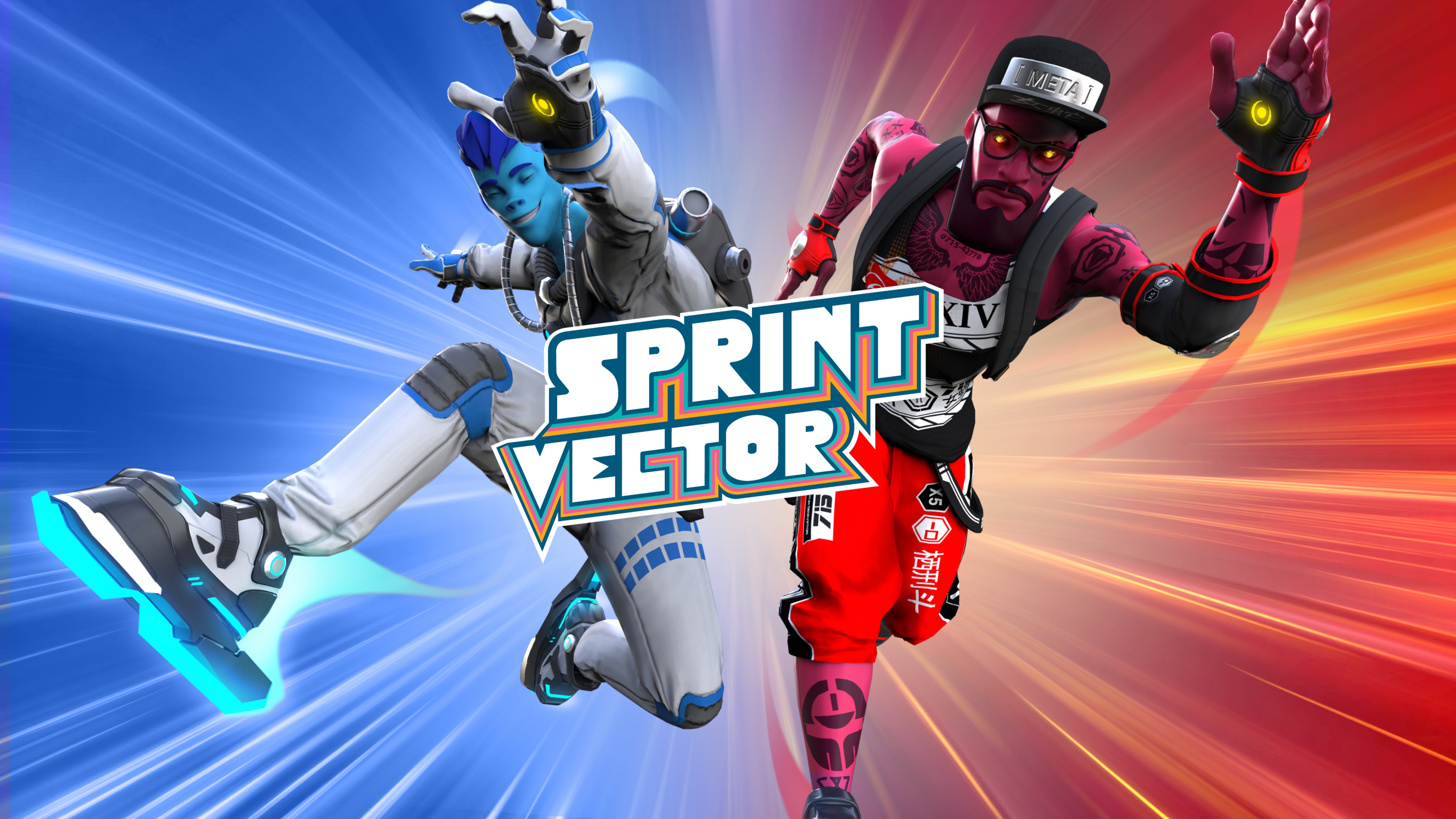Survios Changes The Rules Of VR Locomotion In 'Sprint Vector' (Updated)
Locomotion is one of the most important topics for any VR experience. Game developers have to balance the need to give players engaging ways to interact with the title while ensuring that they don't get nauseous. It's easier said than done. In the months since the Oculus Rift, HTC Vive, and other head-mounted devices (HMD) arrived on the market, developers continue to make new innovations in the way we travel in a virtual environment. I saw another of these attempts last night with Survios (the team that made Raw Data) in its new game called Sprint Vector, and for the first time in quite awhile, I’m baffled as to how a studio was able to create this game without inducing motion sickness.
Gotta Go Fast
As the game’s name suggests, you will be sprinting a majority of the time in Sprint Vector, and utilizing the studio’s Fluid Locomotion system to push yourself forward. The goal is to reach the finish line before your opponent. Along the way, there will be many obstacles, such as high walls, large gaps, and jars, all of which can slow you down.
In order to sprint, you have to pump your arms, as if you were actually running, while pressing the Vive controller’s trigger. The faster you pump, the faster you move. To scale large walls, you can use one of the controllers to get a firm grasp on a handhold, launch yourself in the air, and scale the wall by pulling you arm down sharply. Pressing the touchpad allows you to jump, and making a Superman-like flying pose helps you steer yourself while airborne.
You can see where this is going in terms of locomotion in VR. Traditionally, this type of experience would make you nauseous. The fact that you’re moving at high speeds in the virtual world while you’re physically stationary confuses the brain and makes you feel sick. I watched on the monitor as the person playing game before me attempted to run faster and get around obstacles. The game was so fast-paced that I fully expected him stop and vomit on the floor; yet he was all smiles as he removed the Vive HMD. Unconvinced, and with a sense of dread, I strapped on the same HMD and loaded the game.
Before the start of the race, there was a practice track of sorts where you can test out and familiarize yourself with the controls. As I sprinted forward with the controllers, I anticipated the feeling of a light head followed by an intense throbbing sensation. It never came. It didn’t come up when I used my character’s strength to boost myself over a wall, nor when I used a ramp to jump across to another platform. I was amazed and baffled at the same time.
When the race actually started, I was curious to see if the game’s locomotion would continue to work in my favor. Despite a few hiccups where I hit walls, ran on sand, or missed a crucial jump, I eventually reached the finish line without a single lingering headache. (I won, by the way. Just saying.) As I held the digital trophy after the race, I continued to wonder how Survios was able to create such a unique experience. It could be that the continuous arm motion tricks the brain into thinking that you're in motion both in the real and virtual world.
What's Under The Hood?
Either way, it didn’t seem as if the studio was ready to share it secrets just yet. All I was told was that there are additional underlying elements in the code that make up the secret sauce of the game’s locomotion system.
Get Tom's Hardware's best news and in-depth reviews, straight to your inbox.
In the end, the surprising performance of Fluid Locomotion eased my doubts and made me a believer. If Survios decided to release the technology to other developers, it would be able to solve many problems that developers face when creating VR titles.
As I left the demo area, I felt like a spectator who just left a magic show, deep in thought as to how the magician was able to pull off an amazing trick. Sooner rather than later, we hope to learn how Survios was able to pull of its tricks with Fluid Locomotion, because it might just be the best way to get those prone to motion sickness into a VR world.
Update, 3/1/2017, 8:22 am PST: Corrected a typo in the company's name in the headline.
Rexly Peñaflorida is a freelance writer for Tom's Hardware covering topics such as computer hardware, video games, and general technology news.
